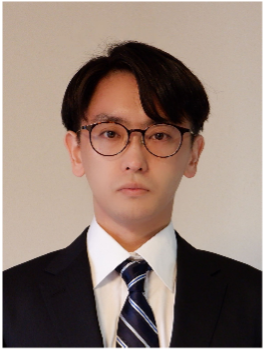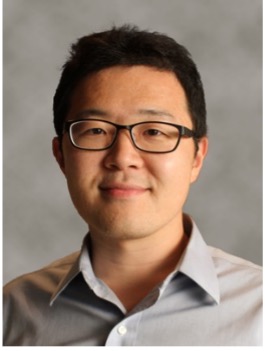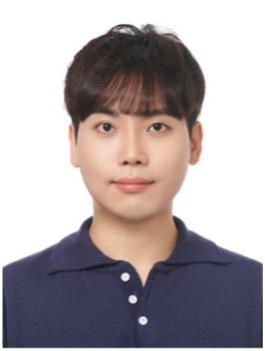The Seventh Japan-Korea-China Joint Visualization (Collocated) Workshop
- Date
- April 23, 2024
- Location
- Keio University, Mita Campus, Tokyo
Organizers
- Issei Fujishiro (Keio University, Japan)
- Yun Jang (Sejong University, South Korea)
- Xiaoru Yuan (Peking University, China)
Program
- 09:00-09:10 Welcome (Issei Fujishiro)
- 09:10-09:50 Session 1: Reports from Japan (Chair: Issei Fujishiro)
- 09:50-10:30 Session 2: Reports from South Korea (Chair: Yun Jang)
- 10:30-10:50 Coffee Break
- 10:50-11:30 Session 3 Reports from China (Chair: Xiaoru Yuan)
- 11:30-11:55 Session 4 Panel (Moderator: Yun Jang)
- 11:55-12:00 Closing Remarks (Xiaoru Yuan)
Session 1: Reports from Japan
Chair: Issei Fujishiro
1-1 Visual Analysis of Leading Lines in Artworks Based on Discrete Morse Theory and Evaluation by Design Experts
Fuminori Shibasaki, Keio University
- Abstract
- Accomplished artists often incorporate leading lines into their compositions to guide the observer’s attention. While saliency maps are typically employed to identify attractive regions in still images, such scalar features do not express the trajectory of an observer’s gaze. In our study, we propose a method for the visual analysis of leading lines based on discrete Morse theory applied to saliency maps. Furthermore, we conducted evaluation experiments with students and research assistants at an art university on Western paintings from the 17th to the 19th century to investigate the feasibility and limitations of our proposed approach.

- Short bio
- Fuminori Shibasaki received his Bachelor of Engineering in Information and Computer Science from Keio University in 2023. He is a member of the Fujishiro Lab and is currently enrolled in a Master Program at Graduate School of Science and Technology, Keio University. His research focuses on visual analysis based on differential topology, particularly exploring leading lines in artworks.
1-2 Comparative 3D Visualization for Ocean Data Analysis Based on Mode Water Regions
Midori Yano, Ochanomizu University
- Abstract
- With advances in data collection methods and calculation techniques, ocean data precision has become increasingly accurate. The proposed visual analysis enables to look for the features of each ocean data based on shape comparison of mode water regions that exist in the ocean using two approaches: visualization of view-based shape similarity, and image-based view selection in the virtual reality space. This talk introduces 3D visual comparisons of mode water regions with interactive exploration.

- Short bio
- Midori Yano is a project associate fellow at the Center for integrates the humanities and sciences, AI and Data Science of Ochanomizu University, Japan. She received her Ph.D. degree from Ochanomizu University in 2020. She was a post-doctoral researcher at Japan Atomic Energy Agency from 2020 to 2023. Her research focuses on visual and immersive analytics of natural phenomena using simulation data.
Session 2: Reports from South Korea
Chair: Yun Jang
2-1 Network Visualization and Visual Decision Support Systems
Hyunwoo Park, Seoul National University
- Abstract
- Businesses and organizations today collect and store unprecedented quantities of data. To make informed decisions with such a massive amount of data, organizations seek to utilize machine learning and AI techniques. Applying advanced techniques must be preceded by a careful examination of the raw data. However, human examination is prone to fail without adequate tools to describe large and complex data. Data visualization empowers human decision-makers to find patterns in such data in an effective manner. This talk presents my research on how interactive visualization helps explore network data and facilitates decision-making processes by demonstrating visual analytics applications.

- Short bio
- Hyunwoo Park is Vice Dean for Academic Affairs and Associate Professor in the Graduate School of Data Science at Seoul National University. Before joining SNU, he was an Assistant Professor in Management Sciences at the Fisher College of Business and a Core Faculty for the Translational Data Analytics Institute (TDAI) at The Ohio State University. Before OSU, he was a postdoctoral fellow at the Tennenbaum Institute at Georgia Tech. He holds a Ph.D. in Industrial Engineering from Georgia Tech, a Master of Information Management and Systems from UC Berkeley, and a B.S. in Electrical Engineering from Seoul National University. His research interests include business and data analytics with an emphasis on visualization, supply chain management from the network perspective, and technology and innovation management in the presence of digital platforms. His research has been published in leading journals, and he has won several awards and nominations from major conferences, including INFORMS and the Academy of Management.
2-2 Access to AI to Understand Human Behavior and Decision-making
Sangbong Yoo, Sejong University
- Abstract
- AI started as a tool to replace simple human labor, but recently, AI research to mimic human thinking, such as Large Language Models, is attracting attention. However, for AI to mimic human thinking, it needs to understand human cognitive processes. A person’s cognitive process uses organs such as eyes, nose, mouth, muscles, brain, etc. to gather information, understand, act, and make decisions until decision-making. Unlike humans, AI does not have organs, so to make decisions similar to humans using given information, it learns to obtain and utilize insights from data. This talk introduces visual analysis technologies and future researchers’ challenges for analyzing data generated from humans to enable AI to understand human cognitive processes and simulate decision-making processes.

- Short bio
- Sangbong Yoo received the bachelor’s and Ph.D. degree in computer engineering from Sejong University, Seoul, South Korea, in 2015 and 2022, respectively. He is currently a postdoctoral researcher at Sejong University, Seoul, South Korea. His research interests include information visualization, visual analytics, and behavioral data analysis.
Session 3 Reports from China
Chair: Xiaoru Yuan
3-1 Narrative Visualization Based on Interactive Web Pages
Juanjuan Long, Jiangnan University
- Abstract
- The lecture focused on the use of interactive web pages to build narrative visualization. It analyzes how to integrate front-end tools, data science and visual design to create dynamic and immersive narrative scenes, explains the whole process from data processing to information architecture and interaction design in detail, and reveals its unique advantages in guiding users to deep participation, insight into data connotation, and strengthening information cognition. Through the analysis of examples, the elaboration of design concepts and the prospect of application, the audience will be inspired to grasp the potential and value of this innovative design technique in various fields, and stimulate the enthusiasm for practice and exploration.

- Short bio
- Juanjuan Long is an associate professor in digital media department of design school at Jiangnan University. She is mainly engaged in the research of data information visualization, graphic design, and digital media interaction design. Her information design work was published in Data Flow by Gestalten Publishing House. Her design and guidance works were selected by IEEE VIS 2021 Arts Program exhibition and shortlisted by IEEE PacificVis Visual Data Storytelling four times.
3-2 Deep Learning for Scientific Data Compression
Chongke Bi, Tianjin University
- Abstract
- In the field of scientific research, thanks to the rapid development of supercomputer performance, domain experts are able to perform larger scale, higher precision, and faster iterative numerical simulation calculations, which provides valuable insights for understanding natural phenomena and scientific discoveries. However, due to the limitations of I/O speed and storage resources, the raw resolution data generated by large-scale numerical simulation calculations is difficult to efficiently transfer to storage media, and it is also difficult to manage storage. This has become the main bottleneck problem when processing large-scale scientific data in scientific visualization and visual analysis workflows. To overcome these problem, lossy compressors have become a key tool. In this talk, I will introduce our recent work for scientific data compression based on deep learning. We have designed several lossy compression methods based on super-resolution and implicit neural representation model. Because these two models can achieve excellent reconstruction quality and better compression ratio than traditional methods in data compression and reconstruction tasks. Finally, I will briefly discuss the future prospects of this dynamic research direction.

- Short bio
- Chongke Bi received the B.Sc. (Eng.) degree and the M.Sc. (Eng.) degree from Shandong University, China, in 2004 and 2007, respectively, and the Ph.D. (Sci.) degree from the University of Tokyo, Japan, in 2012. After that, as a researcher in RIKEN, Japan, he was focused on research in the field of visual analysis of big data on supercomputer from 2012 to 2016. He is currently a Professor at Tianjin University. His current research interests include visualization and high performance computing.
Session 4 Panel
Moderator: Yun Jang
- Fuminori Shibasaki, Keio University
- Midori Yano, Ochanomizu University
- Hyunwoo Park, Seoul National University
- Sangbong Yoo, Sejong University
- Juanjuan Long, Jiangnan University
- Chongke Bi, Tianjin University
Panel Topics
- Human-Centered Design in Data Visualization: Putting Users First
- From Data to Insights: Best Practices in Communicating Information Visually
- AI-driven Visualization and Storytelling of Massive Multimodal Data
